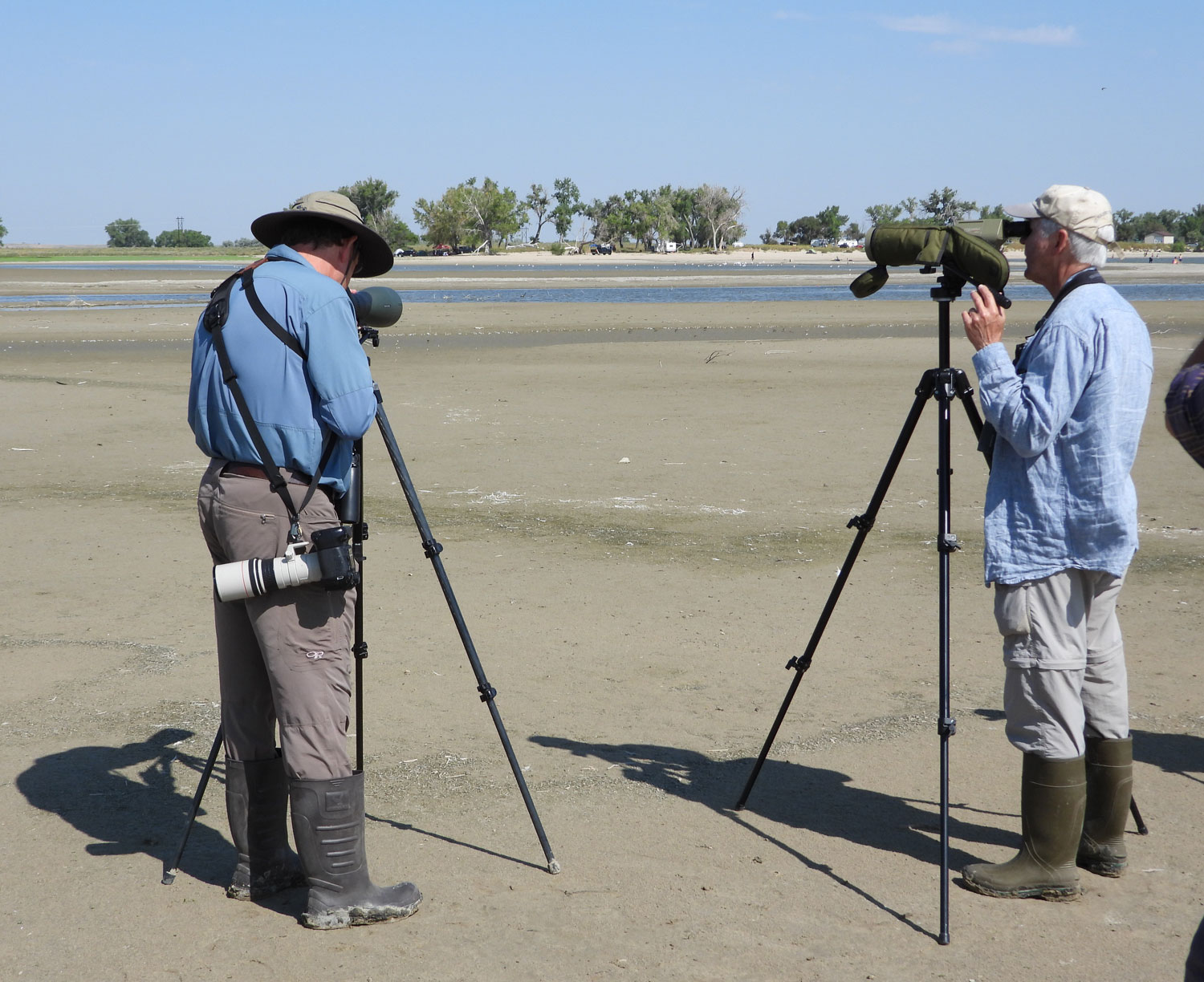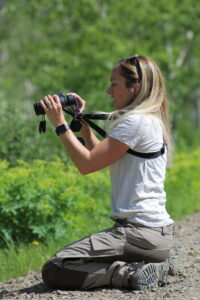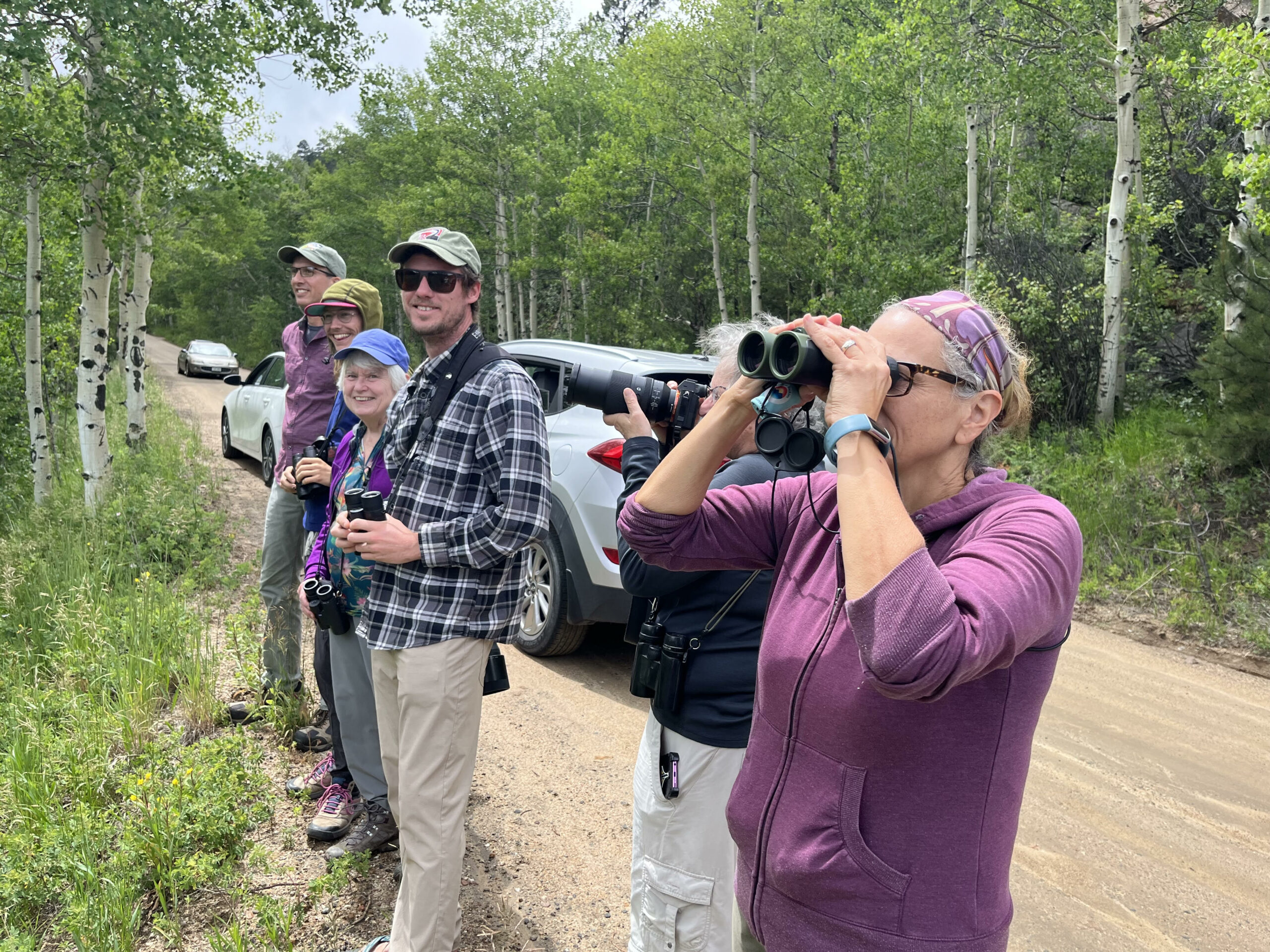Responsible birders protect birds
ABA's Principles of Birding Ethics
Birders should abide by the American Birding Association's Code of Ethics (downloads available in English, Spanish, and French).
Doing so prevents harm to the birds and their habitats, as well as to political relations with the non-birding public, particularly landowners. Please respect this code while birding. Abiding by the ABA Code of Ethics is part of CFO's Code of Conduct for all CFO events.


Ethical Bird Photography
All photographers, whether you're capturing images on your cell phone or with a 10000mm lens, should consider all aspects of ethical photography of birds (and other wildlife).
Doing so reduces harm to the birds while allowing you to photograph natural behaviors and share the experience with other individuals who may be in the area. When photographing birds, please follow the guidance of Audubon’s Guide to Ethical Bird Photography and Videography.
Audio Playback Ethics
In addition to the general ethics promoted by the American Birding Association's Code of Ethics (downloads available in English, Spanish, and French), please pay particular note to the ethical use of audio when birding:
- Limit the use of recordings and other audio methods of attracting birds, particularly in heavily birded areas, for species that are rare in the area, and for species that are threatened or endangered.
- In particular, be aware of regulations related to birds, such as disturbance of protected nesting areas or sensitive habitats, and the use of audio or food lures.

Grouse Lek Ethics
Perhaps Colorado's single greatest claim to birding fame is its tremendous concentration of grouse leks. Birding tours and independent adventurers come in April for the chance to see up to six species displaying at these traditional sites. It is not uncommon for some lek parking lots to fill up during peak viewing season.
In order to ensure the reproductive success of the birds and thus safeguard the spectacle for future generations, it is absolutely essential that you follow these viewing protocols at all leks:
- Arrive and park before first light -- at least an hour before official sunrise, or at least half an hour before civil twilight (see NOAA's webpage for sunrise and twilight times).
- If arriving before other vehicles, try to leave room for them to position themselves so that they can see the grouse too. It is recommended that you park head-in rather than broadside to the lek. If the curved glass of your windshield is going to interfere with your telescope views or your photography, consider backing into the spot and opening the back hatch of your car (if it has one) before dawn. Note that you will not be able to move much during the display if you do this, and that it is often well below freezing on these leks at dawn! Dress for very cold weather.
- Do not get out of your car. If you use it as a blind, the birds will ignore your presence.
- Do not make loud noises or sudden movements.
- Do not leave until the birds do.
- Do not trespass on private land. This is particularly important in the case of Greater Prairie-Chicken, which only displays on private land in Colorado.
Thank you for your cooperation! It is all the more important since anecdotal evidence indicates that viewers who violate these protocols may be contributing to the decline of some leks.
Public & Private Lands
Respecting Property Rights
Coloradans are lucky to live in a state that is over one-third public land. However, it is not always obvious whether particular lands are open to the public, and what regulations govern them. It is the responsibility of the birder at all times to respect the rights of private property owners and the regulations in effect on public lands.
Types of Public Lands
- National Park Service (NPS) lands include National Parks, National Monuments, and National Preserves. These lands typically charge entry fees, and they tend to have much stricter regulations than other federal lands. Camping is allowed only in established campsites and a permit is needed for backcountry sites.
- US National Forest Service (USFS) lands include the National Forests and National Grasslands. Both usually allow free access, and some allow free (dispersed) camping, but some restrict camping to established campsites that charge a fee.
- Bureau of Land Management (BLM) lands are, generally speaking, the least regulated federal lands. Access is usually free and dispersed camping is frequently allowed. BLM also operates campgrounds. Much of the BLM land in Colorado is characterized by sagebrush.
- Wilderness Areas and Wilderness Study Areas are among the most highly regulated and strongly protected public lands. They can occur within federal lands managed by different agencies. They are roadless areas accessible only on foot. Camping requires a permit.
- The US Fish and Wildlife Service (USFWS) administers Colorado's National Wildlife Refuges. Access to most NWRs is limited to refuge auto tour loops. Some are seasonally closed.
- Colorado State Parks charge fees for entry and camping. An annual pass can be purchased from manned park entrances or ordered online.
- State Wildlife Areas (SWAs) are small areas set aside by the Colorado Division of Wildlife for game management purposes. Several SWAs are closed for part of the year to protect wildlife, while others do not permit any public access. Some SWAs offer free camping sites, some charge for camping, and some do not allow camping at all. Entry to all SWAs requires each individual to have a Colorado hunting or fishing license, or an SWA pass. These cannot be purchased at the SWAs and must be purchased from a local vendor or online before entering an SWA.
- The Colorado State Land Board administers Colorado's State Trust Lands. About one-sixth of Colorado's state lands are leased part-time by the Division of Wildlife (DOW) to provide public access for certain types of wildlife recreation, including birding. However, access is usually seasonal and often highly restricted. The DOW maintains a list of properties currently open along with directions and regulations, which is available online from their State Trust Lands webpage.
- Open Space is put aside by some counties and cities as parkland. These properties usually charge no entrance fees but may charge parking fees. Some are not open to the public.
Other publicly accessible lands include city and county parks and wildlife easements. For more information, visit BLM Colorado's page about access to Colorado public lands.
Lands Marked as Public on Maps and Atlases
Birders should be aware that many maps and atlases show boundaries between public and private lands that can occasionally be misleading since not all public lands are open to the public. For example, the "State School Board Lands" (see State Trust Lands above) are often visible on the atlases as little rectangular "islands" of public land in a sea of private property. The problem with seeking out these parcels for birding purposes is that most of them are leased out to farmers or ranchers for their operations, and the lessees have the right to prohibit public access. The same situation can occur on other state lands, of any size and shape, anywhere in Colorado.
Another problem is that maps and atlases do not necessarily reflect recent changes in land ownership. Land swaps and sales occur frequently, particularly on state lands and BLM lands, so even if the land was public yesterday, it may not be public today. Fences and signs on the ground trump the information on your map or atlas. Please keep this in mind when birding the backroads.
Public Roads through Private Property
It is quite common for birders driving rural public roads in Colorado to find themselves confronted by a barbed-wire gate or a fence line posted "private property". Usually, in these circumstances, the road is public and the rest of the land is private. It is acceptable to open these gates and bird from these roads, as long as you stay on the road. If you do open a gate, etiquette demands that you close it once you are through.
Some roads in rural Colorado are private, in which case it is not okay to open gates or bird the roads. Use good judgment to tell the difference. In general, named roads are okay, if not posted as private.
